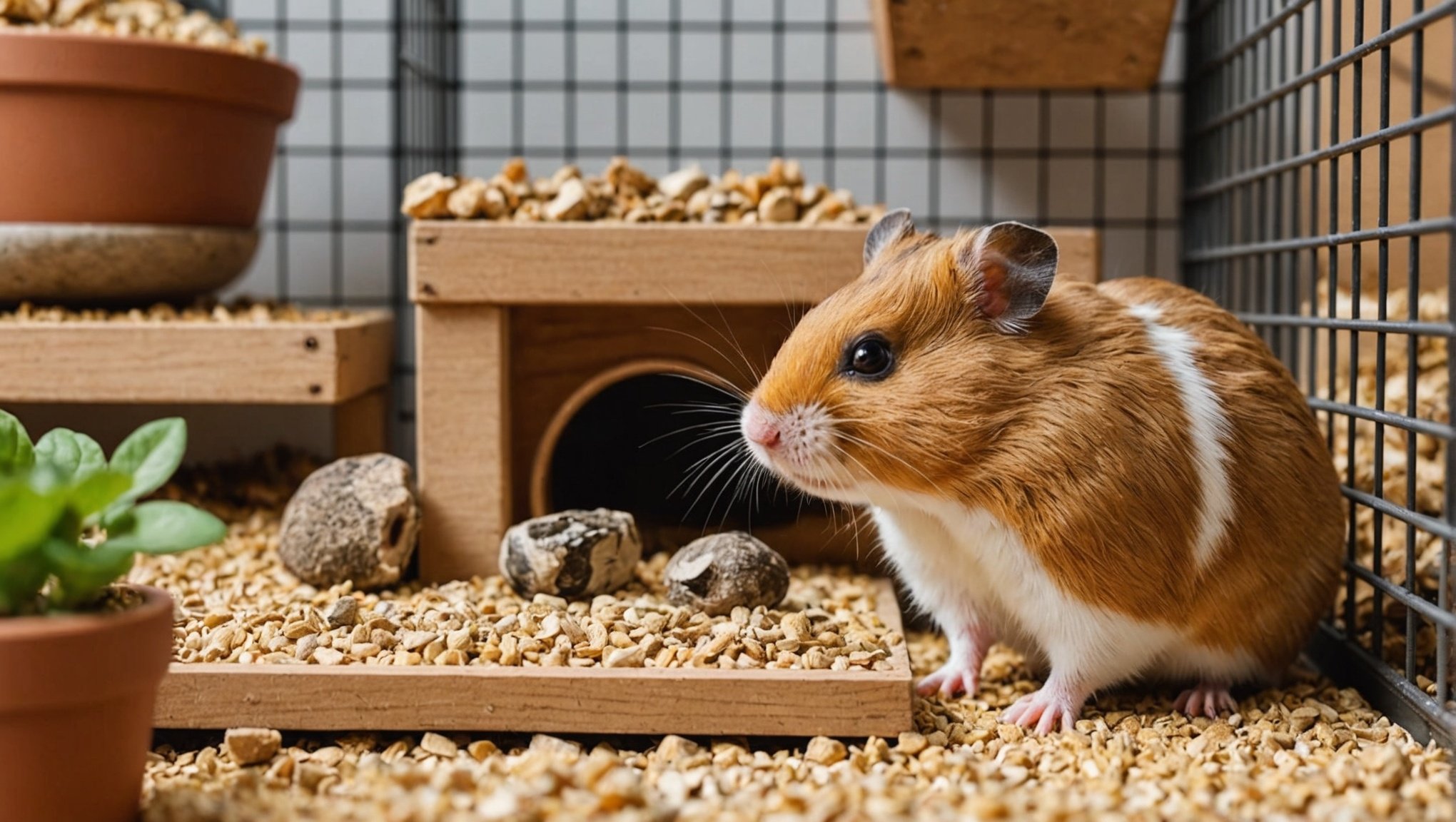Creating a home for your hamster goes beyond providing basic necessities. An engaging habitat can greatly enhance their happiness and health. With careful design, you can transform a simple cage into a stimulating safe haven. This guide explores essential tips tailored for UK homes, ensuring your furry friend has plenty of room to explore, play, and thrive. Discover how to balance functionality with fun while creating a captivating environment that meets your hamster's unique needs.
Understanding Hamster Needs and Preferences
Understanding the hamster care essentials and hamster habitat requirements is crucial for ensuring a happy and healthy pet. In the UK, popular hamster species include the Syrian, Dwarf Campbell, and Roborovski. Each has unique needs that reflect their natural behaviors and instincts.
En parallèle : Creating a Safe and Stimulating Indoor Cat Garden: A Comprehensive Guide for Feline Happiness
Hamsters are nocturnal, so consider their preference for low light and quiet environments. They require ample space to burrow and explore, as these activities mimic their wild habits. A spacious cage with tunnels and bedding supports their instinctual behaviors.
Factors Influencing Habitat Preferences
Several factors affect a hamster's habitat preferences. Space is vital; a cramped environment can lead to stress and health issues. Ensure the cage provides enough room for exercise and exploration.
A lire aussi : Crafting a Flourishing Biotope Aquarium for Native British Freshwater Species: A Step-by-Step Guide
Temperature should be stable, ideally between 18-24°C, to prevent discomfort or illness. Hamsters are sensitive to temperature fluctuations, so avoid placing cages near drafts or direct sunlight.
Light conditions should mimic natural cycles; excessive light can disrupt their sleep patterns. Use a dimly lit area to accommodate their nocturnal nature.
- Space: Essential for exercise
- Temperature: Maintain 18-24°C
- Light: Low light preferred
By understanding these hamster care fundamentals and hamster habitat requirements, you can create an environment that meets their needs and enhances their well-being.
Selecting Safe and Suitable Materials for Your Hamster Habitat
Choosing the right materials for your hamster's home is crucial for their safety and comfort.
Recommended Materials for Cages and Bedding
When constructing a hamster habitat, prioritize non-toxic, chew-resistant materials. Plastic cages are popular due to their ease of cleaning, but ensure they are durable and free from harmful chemicals. Wooden habitats offer a natural aesthetic, though they can absorb moisture and odors. Use kiln-dried pine or aspen bedding to provide a safe, comfortable substrate.
Avoiding Harmful Substances
Avoid cedar and pine shavings, which can emit harmful aromatic oils. Ensure that any materials used do not contain toxic substances that could harm your hamster.
Impact of Plastic vs. Wooden Habitats
Plastic habitats are lightweight and easy to maintain, yet they can accumulate scratches where bacteria may thrive. Wooden habitats, while visually pleasing, require regular treatment to prevent mold. Consider the habitat's location and your hamster's chewing habits when selecting materials.
Checklist for Safe Materials:
- Non-toxic and chew-resistant
- Kiln-dried pine or aspen bedding
- Avoid cedar and pine shavings
By carefully selecting safe materials for your hamster's habitat, you can create a secure and enriching environment that supports their health and well-being.
Designing an Engaging and Stimulating Environment
Creating a hamster enrichment environment is key to their happiness and health. This involves thoughtful habitat design tips to ensure your pet remains engaged and stimulated.
Incorporating Toys and Accessories
Incorporate a variety of toys and accessories to keep your hamster active. Chew toys, exercise wheels, and tunnels can prevent boredom. Regularly rotate these items to maintain interest.
Creating Climbing and Exploration Areas
Establishing climbing and exploration areas is crucial for physical and mental stimulation. Use platforms, ladders, and ropes to encourage climbing. Such structures cater to their natural instincts and support hamster enrichment.
Implementing Hiding Spots and Burrowing Areas
Hiding spots and burrowing areas provide security and comfort. Use small boxes or tubes to create cozy retreats. These elements are vital in habitat design tips for a well-rounded environment.
- Variety: Essential for stimulation
- Safety: Ensure all items are non-toxic
- Rotation: Change toys frequently
- Age-Appropriate: Select toys based on breed
By following these habitat design tips, you can craft a dynamic and enriching space. This approach ensures your hamster remains engaged, promoting their overall well-being.
Size Requirements and Layout Considerations
Understanding the ideal hamster cage size is essential for creating a comfortable living environment. Each breed has specific minimum size requirements to ensure they thrive. For Syrian hamsters, a cage with a floor area of at least 80×50 cm is recommended, while Dwarf species may require slightly less space.
Balancing vertical and horizontal space is crucial. Hamsters enjoy climbing, so incorporating multiple levels can enhance their habitat. However, ample horizontal space is vital for their natural exploration behaviors.
Layout Ideas for Maximizing Space
Designing a thoughtful habitat layout can significantly impact your hamster's well-being. Use platforms and tunnels to create diverse environments. This encourages physical activity and mental stimulation.
Consider the following layout tips:
- Levels: Add vertical space with platforms
- Tunnels: Integrate for exploration
- Open Areas: Ensure sufficient floor space
A well-planned hamster cage size and habitat layout not only meet basic needs but also enrich your pet's life. By focusing on both vertical and horizontal elements, you can create a dynamic and engaging home for your hamster. This approach highlights the importance of space in promoting a hamster's health and happiness.
Maintenance and Common Mistakes to Avoid
Ensuring a clean and safe hamster habitat is essential for your pet’s well-being.
Regular Cleaning Routines and Sanitation Tips
Regular hamster habitat maintenance is crucial to prevent illness and ensure a comfortable living space. Clean the cage weekly, replacing bedding and washing all surfaces with pet-safe disinfectant. Spot-clean areas daily to remove soiled bedding and food debris. This routine helps maintain a hygienic environment.
Common Pitfalls in Habitat Design and Maintenance
Avoid common pitfalls such as overcrowding the cage with unnecessary items. This can restrict movement and cause stress. Ensure all accessories are securely attached to prevent injury. Overlooking ventilation is another mistake; ensure the habitat allows for proper air circulation.
Legal Considerations and Best Practices in Hamster Care
In the UK, adhere to animal welfare laws by providing adequate space and enrichment. The Animal Welfare Act requires that pets have a suitable environment and diet. Familiarize yourself with these regulations to avoid legal issues.
Key Maintenance Tips:
- Clean weekly with pet-safe products
- Spot-clean daily for hygiene
- Ensure proper ventilation
By following these pet care tips and avoiding common errors, you can create a safe and nurturing environment for your hamster. Regular hamster habitat maintenance is vital for their health and happiness.













